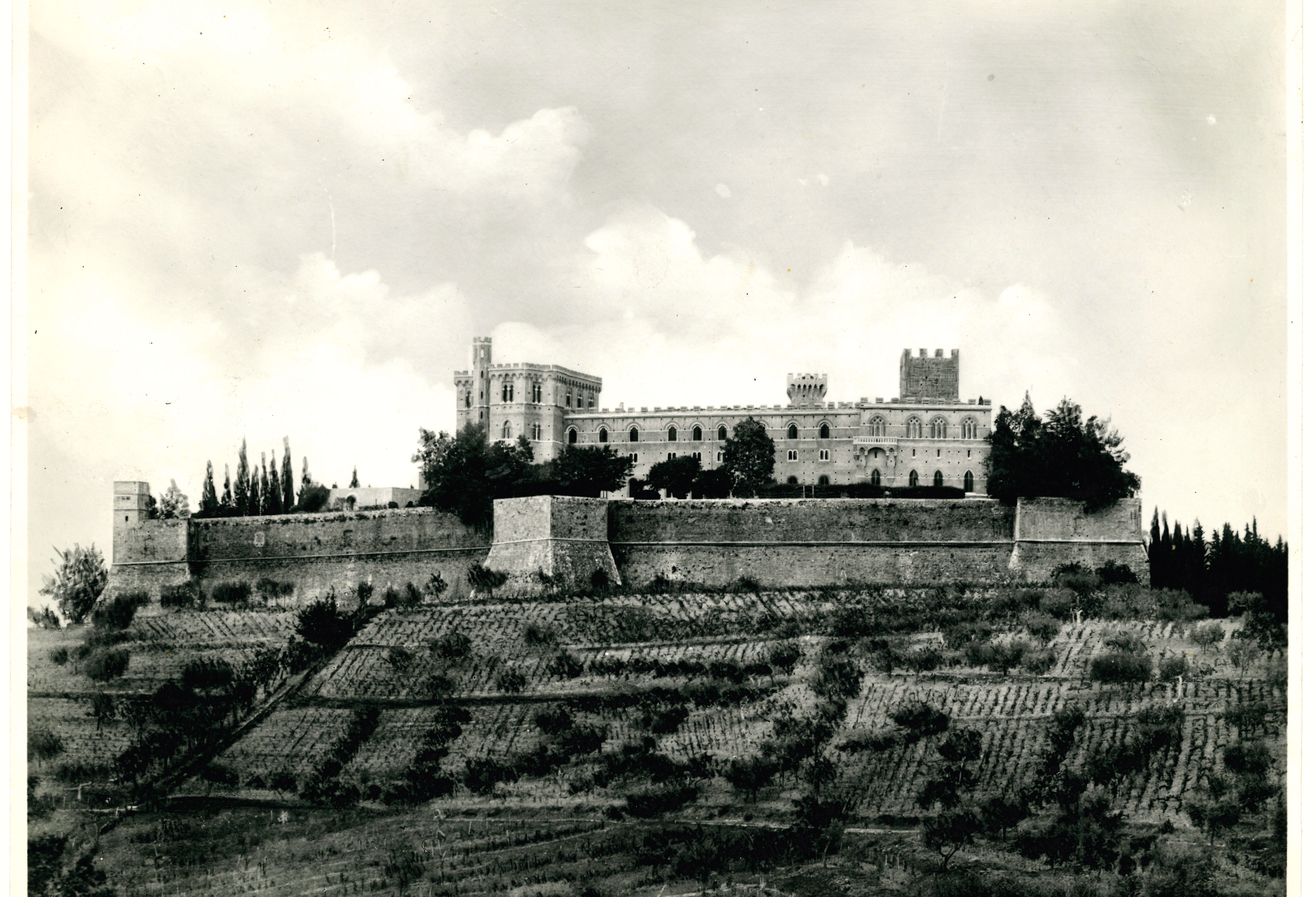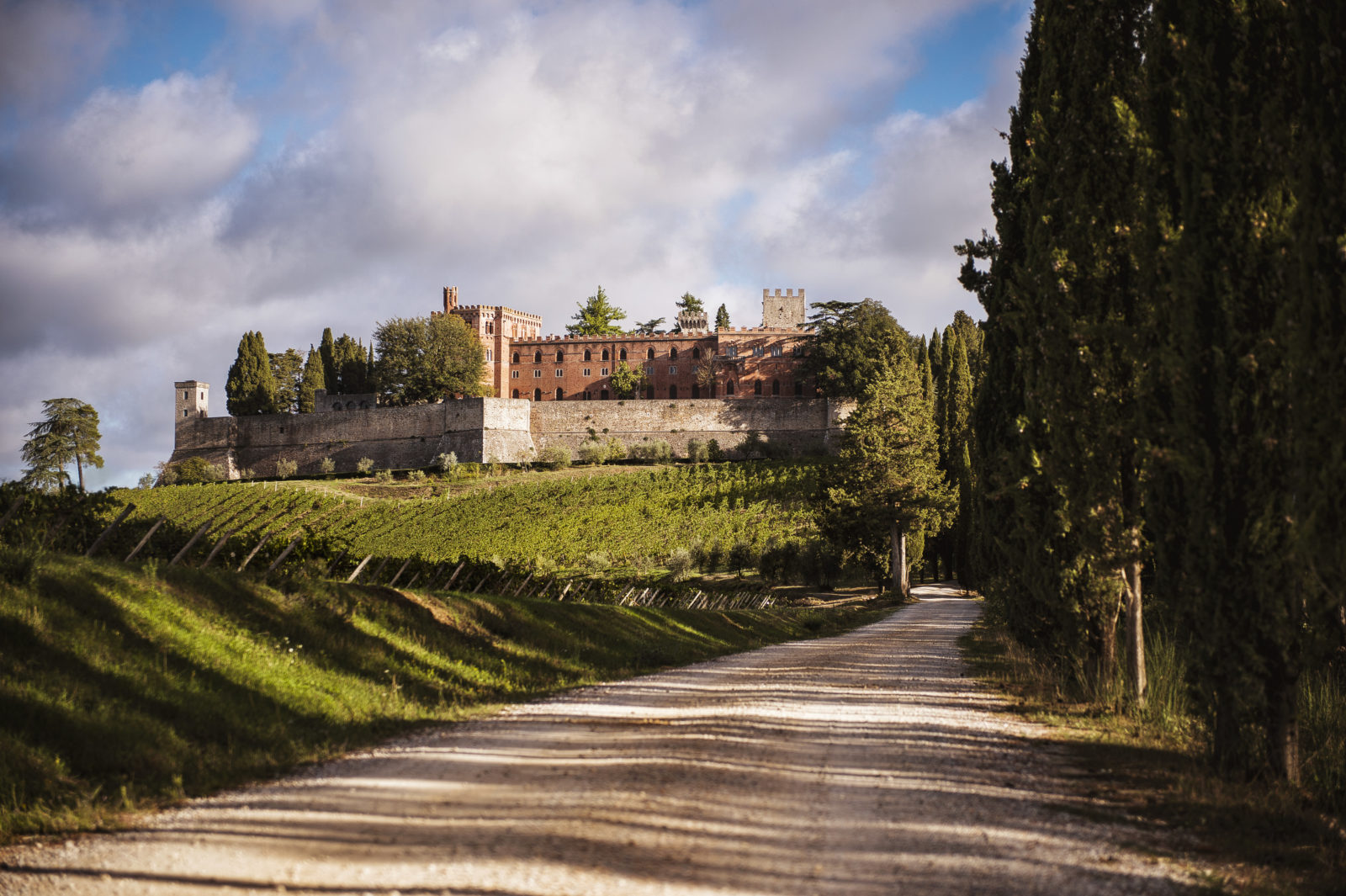

Today we’ll look at history
18 July, 2019We began recounting the history of Brolio in a post last January, followed by two further posts in February and then April, and we’re now at part four. Today we’ll continue by sharing the fascinating description of the Castle as found in texts in our private library.
Behind the Chapel, there is the ancient Castle Keep. With its crenellated towers, it offered the protection needed during extreme fighting and served as the residence to the feudal lords. The highest tower could be isolated from the other buildings by raising a drawbridge, in case a final and desperate defense of the castle were needed.
Moving alongside the group of towers, following the walkway, you arrive at the wall walkway that crowns the bastions. The powerful castle walls are immediately visible, their irregular pentagonal shape and careful construction allowed defense from the bastions of all sides against attacks. According to a study by the military historian General Raffaele Cadorna, this would be the earliest example in Italy of bastioned walls. The walls are 14 meters high on average and up to 16 on the western side, with a total circumference of about 450 meters. Under the wall walkway and in the rest of the rampart there were a number of intricate underground passageways (no longer practicable), which led to numerous arrow slits. This allowed the men to move rapidly to defend the Castle while still remaining undercover. The lower half of the walls were built as an escarpment and the upper half as perfectly perpendicular, and they were originally surrounded by moats. The earliest entry was quite a bit smaller and more narrow: the keystone from this original gate can be seen embedded in the external wall beside the current entrance, put there to show the height of the original entry to the Castle.
The hill on which the Castle rises is here covered with conifers, and descends very rapidly to the Borro delle Ripi below. Close behind it there are steep mountains (Monte Castelli, Monte Martini, Cetramura) where even today there are ruins of the ancient fortifications that completed the defensive system of Brolio.
Turning right along the wall walkway, you quickly reach the main side of the Castle (south side), where there is a vast panorama contrasting vividly with the previous harshness. On the horizon to the left, between the east and the south, there are Monte Cetona and Monte Radicofani, to the south the bulk of Monte Amiata, towards the southwest the towers and bell towers of Siena, more to the right the mountains of Volterra, and below, nearby, the valley of the Arbia River.
You are now in front of the manor house constructed with bricks and stone in the Siena Gothic style, restored and in part built for the Baron Bettino Ricasoli (1860) based on a project by the architect Marchetti from Siena. On the wall of the building, to the left, a plaque commemorates the visit made on 22 April 1863 by His Majesty, King Vittorio Emanuele II, first King of Italy.
It was on the mezzanine level in the modest rooms that he preferred and that have remained intact, as they were, that Baron Bettino Ricasoli (1809-1880) passed away. His is a name connected with the history of the Italian Risorgimento for the leading role, which he played as a patriot, statesman and private citizen.
Returning once again to the wall walkway and continuing, you reach a small corner tower, on the high western side of the Castle, with a view over an undulating horizon. Continuing even more, you return to the northern side, looking down on the entranceway, where you pass over the entrance door. Then turn right and you are once again at the Castle.
In the next and final history lesson, we’ll tell you all about the Iron Baron.
We’ll be back very soon.







